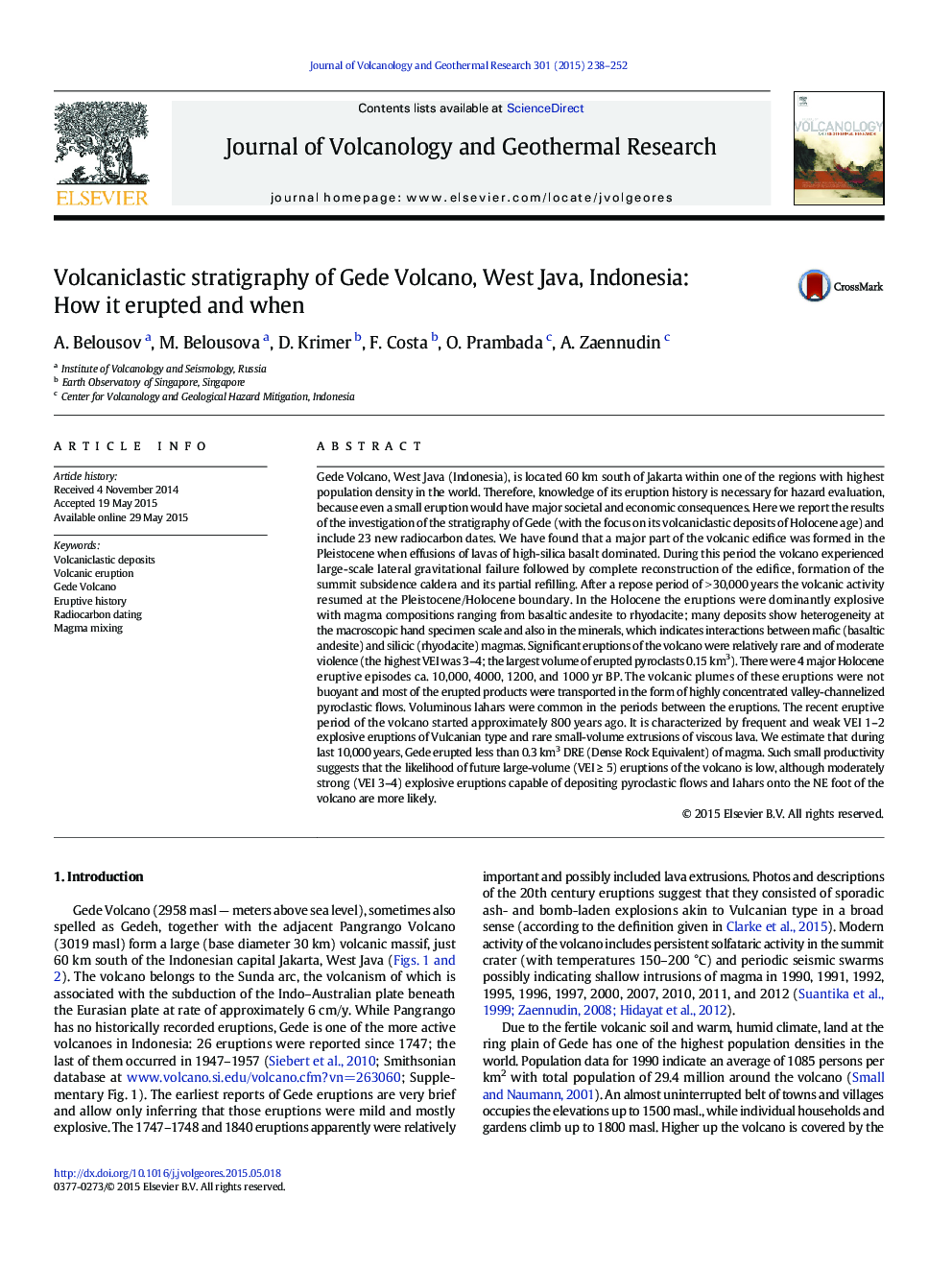| کد مقاله | کد نشریه | سال انتشار | مقاله انگلیسی | نسخه تمام متن |
|---|---|---|---|---|
| 4713127 | 1638321 | 2015 | 15 صفحه PDF | دانلود رایگان |
• Stratigraphy of volcaniclastic deposits of Gede Volcano (Indonesia) is described.
• 23 new radiocarbon dates for Gede Volcano are reported.
• Timing and character of activity of Gede Volcano in Holocene are revealed.
• Main magmatic processes of Gede Volcano are investigated.
• Gede Volcano reawakened in the Holocene after > 30,000 years of dormancy.
Gede Volcano, West Java (Indonesia), is located 60 km south of Jakarta within one of the regions with highest population density in the world. Therefore, knowledge of its eruption history is necessary for hazard evaluation, because even a small eruption would have major societal and economic consequences. Here we report the results of the investigation of the stratigraphy of Gede (with the focus on its volcaniclastic deposits of Holocene age) and include 23 new radiocarbon dates. We have found that a major part of the volcanic edifice was formed in the Pleistocene when effusions of lavas of high-silica basalt dominated. During this period the volcano experienced large-scale lateral gravitational failure followed by complete reconstruction of the edifice, formation of the summit subsidence caldera and its partial refilling. After a repose period of > 30,000 years the volcanic activity resumed at the Pleistocene/Holocene boundary. In the Holocene the eruptions were dominantly explosive with magma compositions ranging from basaltic andesite to rhyodacite; many deposits show heterogeneity at the macroscopic hand specimen scale and also in the minerals, which indicates interactions between mafic (basaltic andesite) and silicic (rhyodacite) magmas. Significant eruptions of the volcano were relatively rare and of moderate violence (the highest VEI was 3–4; the largest volume of erupted pyroclasts 0.15 km3). There were 4 major Holocene eruptive episodes ca. 10,000, 4000, 1200, and 1000 yr BP. The volcanic plumes of these eruptions were not buoyant and most of the erupted products were transported in the form of highly concentrated valley-channelized pyroclastic flows. Voluminous lahars were common in the periods between the eruptions. The recent eruptive period of the volcano started approximately 800 years ago. It is characterized by frequent and weak VEI 1–2 explosive eruptions of Vulcanian type and rare small-volume extrusions of viscous lava. We estimate that during last 10,000 years, Gede erupted less than 0.3 km3 DRE (Dense Rock Equivalent) of magma. Such small productivity suggests that the likelihood of future large-volume (VEI ≥ 5) eruptions of the volcano is low, although moderately strong (VEI 3–4) explosive eruptions capable of depositing pyroclastic flows and lahars onto the NE foot of the volcano are more likely.
Journal: Journal of Volcanology and Geothermal Research - Volume 301, 15 August 2015, Pages 238–252
